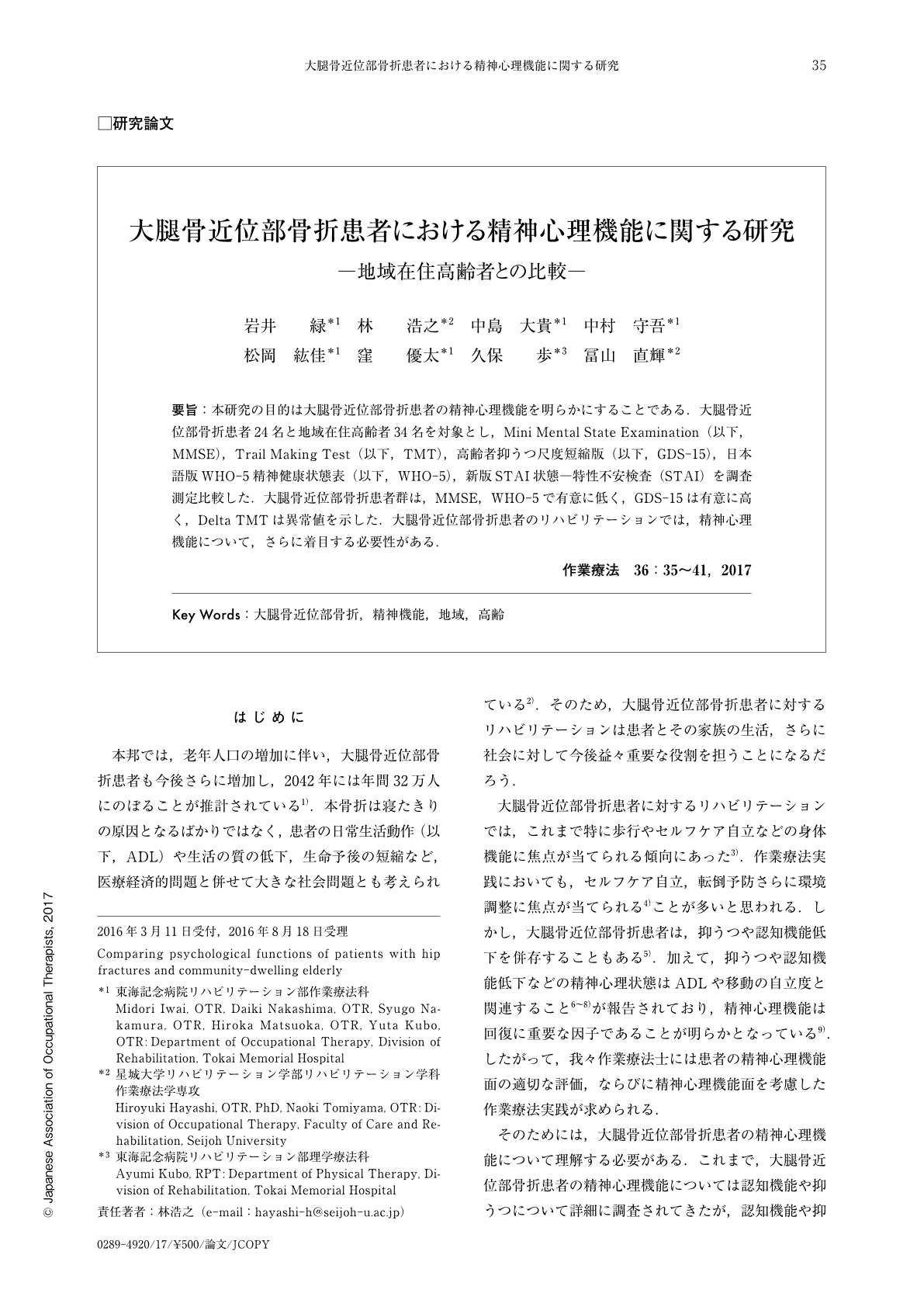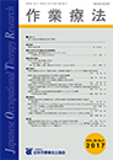Japanese
English
- 販売していません
- Abstract 文献概要
- 1ページ目 Look Inside
- 参考文献 Reference
要旨:本研究の目的は大腿骨近位部骨折患者の精神心理機能を明らかにすることである.大腿骨近位部骨折患者24名と地域在住高齢者34名を対象とし,Mini Mental State Examination(以下,MMSE),Trail Making Test(以下,TMT),高齢者抑うつ尺度短縮版(以下,GDS-15),日本語版WHO-5精神健康状態表(以下,WHO-5),新版STAI状態─特性不安検査(STAI)を調査測定比較した.大腿骨近位部骨折患者群は,MMSE,WHO-5で有意に低く,GDS-15は有意に高く,Delta TMTは異常値を示した.大腿骨近位部骨折患者のリハビリテーションでは,精神心理機能について,さらに着目する必要性がある.
The purpose of this study was to clarify the psychological functions of hospitalized patients with hip fractures by comparing such functions with those of community-dwelling elderly. The subjects were 24 patients with hip fracture and 34 community-dwelling elderly. For the psychological examinations, the following measurements were used: Mini mental state examination (MMSE), Trail Making Test (TMT), Geriatric Depression Scale Short Forms (GDS-15), the WHO-Five well-being index (WHO-5), and the State-Trait Anxiety Inventory-Form JYZ (STAI). A comparison of the results between the two groups indicated that patients with hip fractures exhibited significantly lower levels in the MMSE and WHO-5, and significantly higher values for GDS-15, while the Delta TMT time was considered pathological. These results suggest that rehabilitation for patients with hip fractures should focus on both physical aspects and psychological areas.

Copyright © 2017, Japanese Association of Occupational Therapists. All rights reserved.


